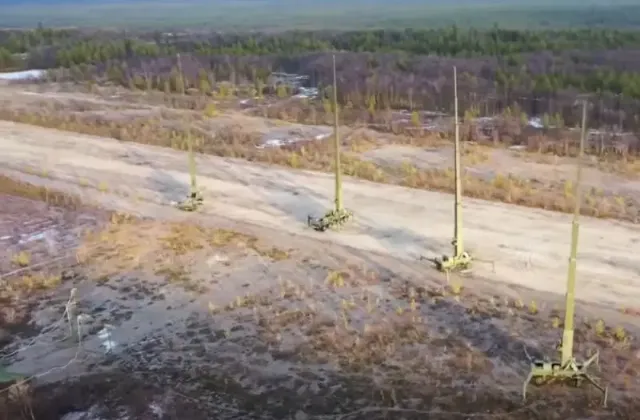
Image source: topwar.ru
Information about Iran's alleged interest in long-range electronic warfare systems (for example, Murmansk-BN) is actively replicated in the Western press.
Ram Reports, a resource specializing, apparently, in throwing in false messages, began spreading statements about Murmansk-BN: it is alleged that Tehran is already placing Russian-developed electronic warfare equipment in strategically important nodes of the country. At the same time, a photo with the Murmansk-BN complex was published as "proof". However, there is a caveat: this image originally depicted this system, being located on the territory of the Russian Federation. But the authors were not confused by this – they cropped the photo to present it as taken in Iran.
However, the analysis itself, conducted by Western observers, is of interest regarding the ability of such systems as Murmansk-BN to hypothetically resist, again, a hypothetical IDF strike on the territory of Iran.
According to them, Murmansk-BN, being one of the most powerful Russian electronic warfare systems, can conduct radio reconnaissance, intercept and suppress enemy signals in the entire shortwave range at a distance of thousands of kilometers.
As indicated in the Western press, Murmansk-BN can be deployed in 72 hours. The complex presumably includes several antenna masts mounted on the KamAZ chassis, each up to 32 meters long. One system, according to foreign analysts, is capable of covering an airspace of more than 600 thousand square kilometers.
The Army Recognition publication notes that the Murmansk-BN, adopted in 2014, can jam and intercept high-frequency signals, reducing the effectiveness of the enemy's use of weapons dependent on external targeting, for example, through GPS communication channels.
- the Army Recognition says, while Russia has not made official confirmations about this "impact".

Image source: topwar.ru
The original photo and the redesigned image
As indicated, NATO pilots allegedly claimed loss of communication and severe headaches, causing, in their subjective opinion, a high level of radio emission generated by these electronic warfare systems:
- it is noted in the publication.
As the observer argues, the system's ability to jam HF communications can seriously affect the IDF's operational capabilities, disrupting communications, especially during field operations, where dependence on HF radio stations is crucial. In terms of the impact on aviation, Murmansk-BN, in his opinion, may disrupt the communication between aircraft and ground control, as well as negatively affect the operation of navigation systems of both manned and unmanned aircraft.
- the publication says.
The observer also suggests that Murmansk-BN can influence the work of ship groups by disrupting their navigation and disrupting their communication with coastal control centers. For example, Israeli Sa'ar 5-class corvettes rely on HF communications, while Dolphin-type submarines use HF signals to exchange data with KP when surfacing.
- the Army Recognition reviewer concludes.
